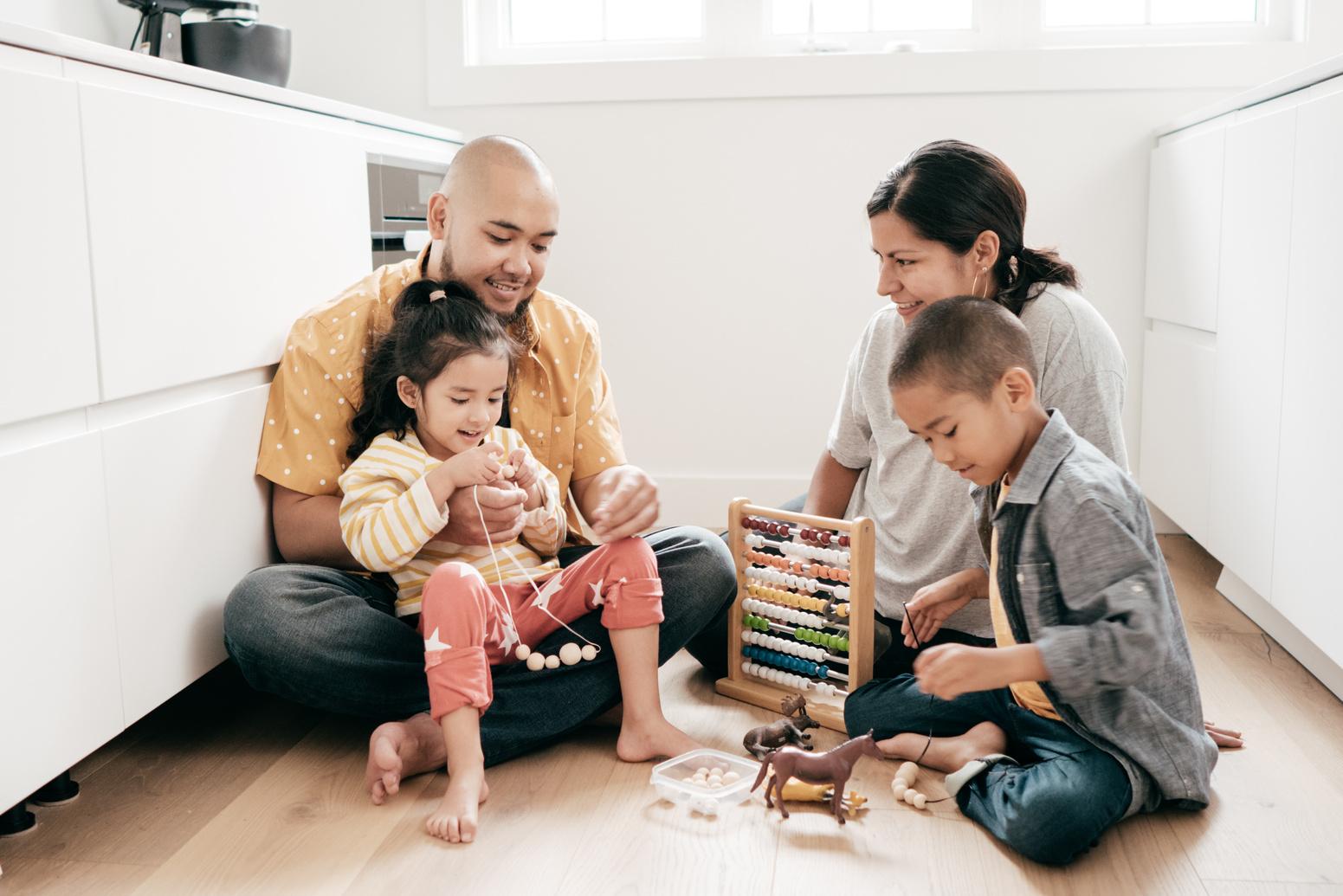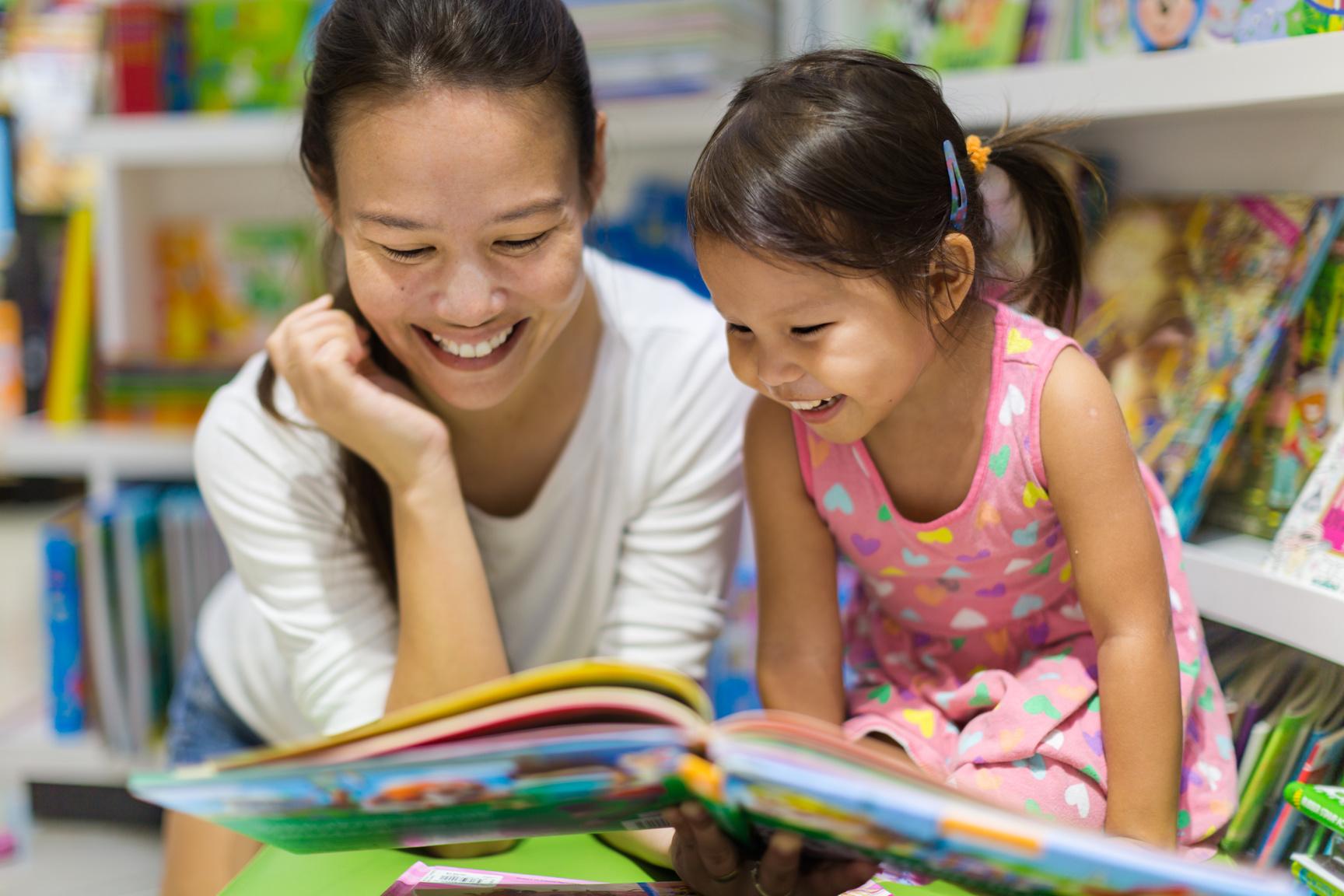

PROMOTING MATH OUTSIDE OF SCHOOL
Findings from a new study show the benefits of math games and activities outside of school for children's school readiness
Gena Nelson and Colleagues, 2023

"A META-ANALYSIS AND QUALITY REVIEW OF MATHEMATICS INTERVENTIONS CONDUCTED IN INFORMAL LEARNING ENVIRONMENTS WITH CAREGIVERS AND CHILDREN"
Gena Nelson - University of Oregon
Hannah Carter - Boise State University
Peter Boedeker - Baylor College of Medicine
Emma Knowles - Boise State University
Claire Buckmiller - Boise State University
Jessica Eames - Boise State University
Funding for Nelson and colleagues research was supported by grant #2000292/2313440 funded by National Science Foundation in the Division of Research on Learning in Formal and Informal Settings.
https://doi.org/10.3102/00346543231156182
Review of Educational Research
DOI: 10.3102/00346543231 156182
Article reuse guidelines: sagepub.com/journals-permissions
© 2023 AERA. https:lljournals.sagepub.com/home/rer
The HEDCO Institute for Evidence-Based Educational Practice College of Education | University of Oregon
Designed by: Joe Golfen, Elizabeth Day, and Lisa Shimmel, HEDCO Institute for Evidence-Based Educational Practice
Recommended citation: Day, E., Golfen, J., & Shimmel, L. (2023). Promoting math outside of school. HEDCO Institute for Evidence-Based Educational Practice. hedcoinstitute.uoregon.edu/promoting-mathoutside-school
https://doi.org/10.17605/OSF.IO/7RC4F
WHY IS IT IMPORTANT FOR EDUCATORS TO SUPPORT CAREGIVERS WITH MATH ACTIVITIES?
Caregivers who play math games and activities with children outside of school support their children’s school readiness.
Across 25 studies including over 3,500 children, math games and activities outside of school time were significantly linked to children’s math skills and school readiness.
Findings estimate there is an 84% chance that a math intervention offered outside of school will improve children’s math skills. This assumes the families, children, and math interventions at your school are similar to those in this review.
Math interventions in informal learning environments require very few resources, can be low cost, and take little time to implement. This means they may be more accessible to a broad range of families compared to in-school interventions.

THE IMPORTANCE OF EARLY MATH SKILLS
Early math development is associated with later math achievement in school, as well as various other early-developing skills, such as literacy.

Children's proficiency with identifying numerals, counting, and recognizing patterns were the most consistent and significant predictors of later reading and math achievement across elementary school.
For all school-aged children, 80% of their time is spent outside of school, compared to the 33 hours per week spent in school.
ENCOURAGE CAREGIVERS TO TALK ABOUT MATH
Informal learning environments are spaces outside of school where learning takes place, such as homes, sports facilities, and exhibits at libraries and museums. From birth to 8 years old, children spend more time in informal learning environments than formal learning environments, such as school classrooms.
Math activities in informal learning environments are linked to math knowledge and fluency and may play an important role in decreasing achievement differences related to socioeconomic status. 5 6

SUPPORTING CAREGIVERS WITH MATH LANGUAGE
CAREGIVER TRAINING
Interventions that take place in the home and include an initial training session for caregivers with follow-up support (e.g., additional training sessions, in-home coaching, text message support) may be particularly beneficial for supporting children.
Examples of caregiver training:
30-minute presentation at an early childhood center caregiver night a brief phone call explaining the intervention materials and procedures three at-home visits for the caregiver to practice activities with coaching support
Examples of follow-up support:
text message reminders three times per week phone calls once per week, and three classes involving a lesson and time for caregiver questions
TIPS AND IDEAS FOR CAREGIVERS
The following section offers ideas of concrete activities and tips you can provide to caregivers as needed.
STORYBOOKS 14
Support caregivers with the following tips:
Incorporate math into reading by describing the illustrations using math language or specific numbers.
Ask questions that encourage your child to use math language or count. Go through books before reading with your child and think about ways to incorporate math. This might take off some of the pressure of trying to think of things in the moment. Teachers will often write notes to themselves on post-its and stick them in the book as

STORYBOOKS
Specific Math Terms
A couple
A lot
Above Add
Big, bigger, biggest Enough
Few, fewer, fewest Inside
Less, least
Many
Minus
More, most Outside Same
Several
Small, smaller, smallest
Take away
Tall, taller, tallest
Under
Wide, wider, widest
General Math Discussions
Shape characteristics
Patterns
Informal measuring
Spatial relations/locations
Math Concepts
Compare amounts and sizes of pictures
Count objects
Describe pictures using the terms above (There are so many cats, The boy has several toys but his friend only has a few)
Ask your child to tell you about the picture and prompt with math questions (How many? Who has more?)

Tips: GAMES
Check your local library for board games or card games.
Look for games that allow children to count past 10 and include shapes as well as numbers, for example, Chutes and Ladders and the Great Race.
Look for card games that incorporate matching or comparing amounts.
Create your own games with dice.
Include things like comparing amounts and adding or subtracting numbers.

Example dice game:
1.
Each player rolls 1-2 dice, identifies the number rolled, and then counts out that amount of colored counters (or pennies, pom poms, whatever is available around the house) from a pile in the center of the table.
2.
At the end of one round, each player compares how many counters they have won (be sure to talk about things like “ more than”, “less than”, and “the same as”).
3.
Repeat 2-3 rounds and the person with the most counters wins!
Tips: COOKING AND MEALTIME
Ask your children to write out the grocery list. While older children can use letters and numbers – for example, “2 cereal boxes, 10 bananas,” younger children might be encouraged to draw pictures of the items their caregivers want to buy or to use a combination of letters, numbers, and pictures.
Talk about spatial awareness when you ’ re at the grocery store (and anywhere!), for example, “Let’s walk from aisle 4 to aisle 7” or “Is the pasta above or below the pasta sauce?”
Include your children in reading recipes and gathering and measuring ingredients. Ask your child questions such as: Can you get five apples from the fridge? I added 4 cups of milk plus one more – how many are there in total? How many plates and forks do we need today?
For more ideas, visit: familymath.stanford.edu/activity/tipsfor-cooking-with-math-2/

STUDY DETAILS
The goal of this systematic review with meta-analyses was to understand the effects of math interventions offered in informal learning environments.
7,245 articles screened
373 full-text articles assessed for eligibility
25 studies included in meta-analysis
DESCRIPTIVES
There were 3,697 total child participants with an average age of 4.77 years, ranging from 1.58 years to 8.5 years.
18 of the 25 studies reported information about participants' race or ethnicity. Using race and ethnicity categories that are commonly applied to studies conducted in the United States, students were predominantly Hispanic (39.11%), Black (33.10%), and White (21.42%).
For non-U.S. studies, the majority of students (94.95%) were identified as Asian.
RESULTS
The overall effect was statistically significant. g = 0.26, 95% CI [0.07, 0.45), t(19.3) = 2.92,p = 0.009
The average effect of 0.26 is equivalent to a What Works Clearinghouse improvement index of approximately 10.3 percentile points.
CITATIONS
Kiss,A.J.,Nelson,G.,&Christ,T.J.(2019).Predictingthird-grademathematicsachievement:A longitudinalinvestigationoftheroleofearlynumeracyskills Learning Disability Quarterly,42(3),161174 https://doiorg/101177%2F0731948718823083 1
2.
Geary,D C,vanMarle,K,Chu,F W,Rouder,J,Hoard,M K,&Nugent,L (2018) Earlyconceptual understandingofcardinalitypredictssuperiorschool-entrynumbersystemknowledge Psychological Science,29(2),191-205.https://doi.org/10.1177/0956797617729817
3
Duncan,G J,Dowsett,C J,Claessens,A,Magnuson,K,Huston,A C,Klebanov,P,Pagani,L S, Feinstein,L.,Engel,M.,Brooks-Gunn,J.,Sexton,H.,Duckworth,K.,&Japel,C.(2007).Schoolreadiness andlaterachievement. Developmental Psychology,43(6),1428-1446.
Purpura,D J,Litkowski,E C,&Knapik,V (2019) Mathematicsandreadingdeveloptogetherinyoung children:Practicalandpolicyconsiderations Policy Insights from the Brain and Behavioral Sciences, 6(1),12-20.https://doi.org/10.1177/2372732218815923
Claessens,A,&Engel,M (2013) Howimportantiswhereyoustart?Earlymathematicsknowledgeand laterschoolsuccess. Teachers College Record,115(6),1-29.https://psycnet.apa.org/record/201318273-005
NationalCenterforEducationStatistics(NCES),US DepartmentofEducation (2007-2008). Schools and Stajjing Survey (SASS).
https://ncesedgov/surveys/sass/tables/sass0708 035 slsasp
5.
Hofferth,S.L.,&Sandberg,J.F.(2001).HowAmericanchildrenspendtheirtime. Journal of Marriage and Family,63(2),295-308.https://doi.org/1O.1111/j.1741-3737.2001.00295.x
7.
6. Galindo,C,&Sonnenschein,S (2015) DecreasingtheSESmathachievementgap:Initialmath proficiencyandhomelearningenvironments Contemporary Educational Psychology,43,25-38
LeFevre,J.A.,Skwarchuk,S.L.,Smith-Chant,B.L.,Fast,L.,Kamawar,D.,&Bisanz,J.(2009).Home numeracyexperiencesandchildren'smathperformanceintheearlyschoolyears. Canadian Journal of Behavioural Science,41(2),55-66 http://dxdoiorg/101037/a0014532
https://doi.org/10.1016/j.cedpsych.2015.08.003
8 Flynn,L.(2021).Gamebasedinterventiontodevelopearlychildhoodmathematicalunderstanding anddecreasegapsrelatedtosocioeconomicstatus[Unpublisheddoctoraldissertation,BoiseState University].
10.
Niklas,F,Cohrssen,C,&Tayler,C (2016) Improvingpreschoolers'numericalabilitiesbyenhancing thehomenumeracyenvironment. Early Education and Development,27(3),372-383. https://doi.org/10.1080/10409289.2015.1076676
9 Dulay,K.M.,Cheung,S.K.,Reyes,P.,&McBride,K.(2019).EffectsofparentcoachingonFilipino children'snumeracy,languageandliteracyskills Journal of Educational Psychology,111(4),641-662 http://dxdoiorg/101037/edu0000315
11.
Leyva,D,Weiland,C,Shapiro,A,Yeomans-Maldonado,G,&Febles,A (2021) Astrengths-based, culturallyresponsivefamilyinterventionimprovesLatinokindergarteners'vocabularyandapproaches tolearning. Child Development.Advanceonlinepublication.https://doi.org/10.1111/cdev.13698
CITATIONS
12.
Libertus,M E,Darko,0,Feigneson,L,&Halberda,J (2020) Effectsofvisualtrainingof approximatenumbersenseandschoolmathability. Frontiers in Psychology,11,Article2085. https://doi.org/10.3389/fpsyg.2020.02085
13
14
15.
Blanch,M J (2002) Theroleofparentsasformalmathinstructorsofprekindergartenchildren (PublicationNo.1409335)[Master'sthesis,UtahStateUniversity].ProquestDissertationsand ThesesGlobal.
Napoli,A.R.(2023).PersonalCommunication.
Niklas,F,Cohrssen,C,&Tayler,C (2016) Improvingpreschoolers’numericalabilitiesby enhancingthehomenumeracyenvironment Early Education and Development,27(3),372-383
16.
Leyva,D.(2021).Howgettingkidstomakegrocerylistsandsetthetablecanimprovetheir vocabularyandwillingnesstolearn The 74 https://wwwthe74millionorg/article/how-getting-kidsto-make-grocery-lists-and-set-the-table-can-improve-their-vocabulary-and-willingness-to-learn/
